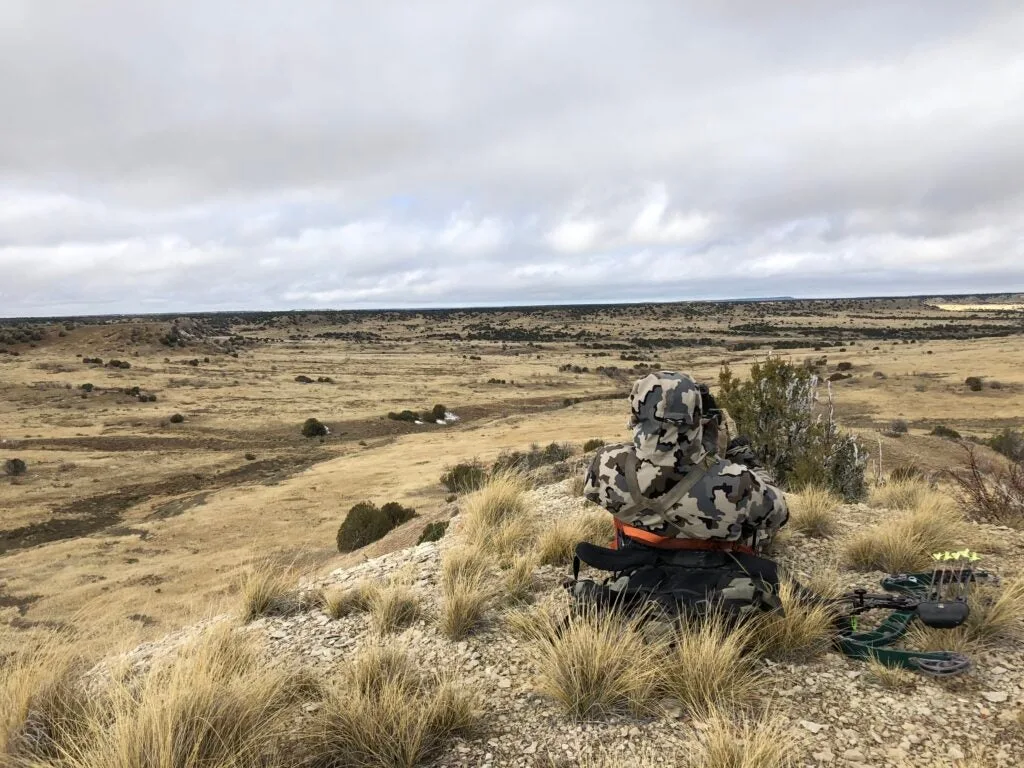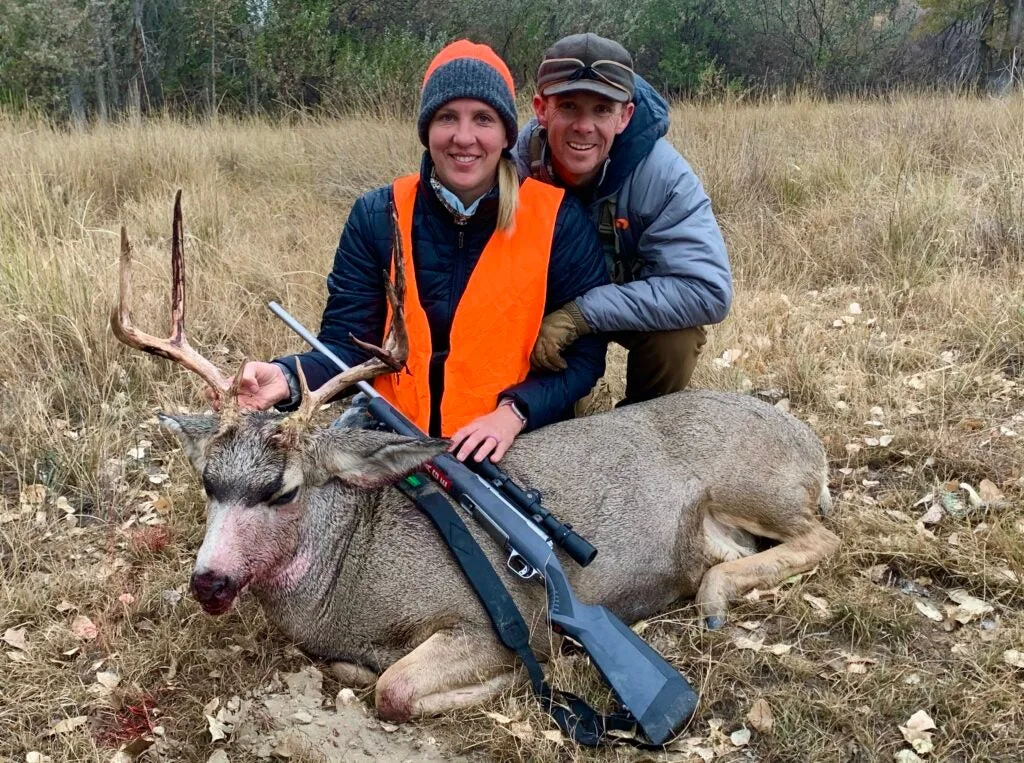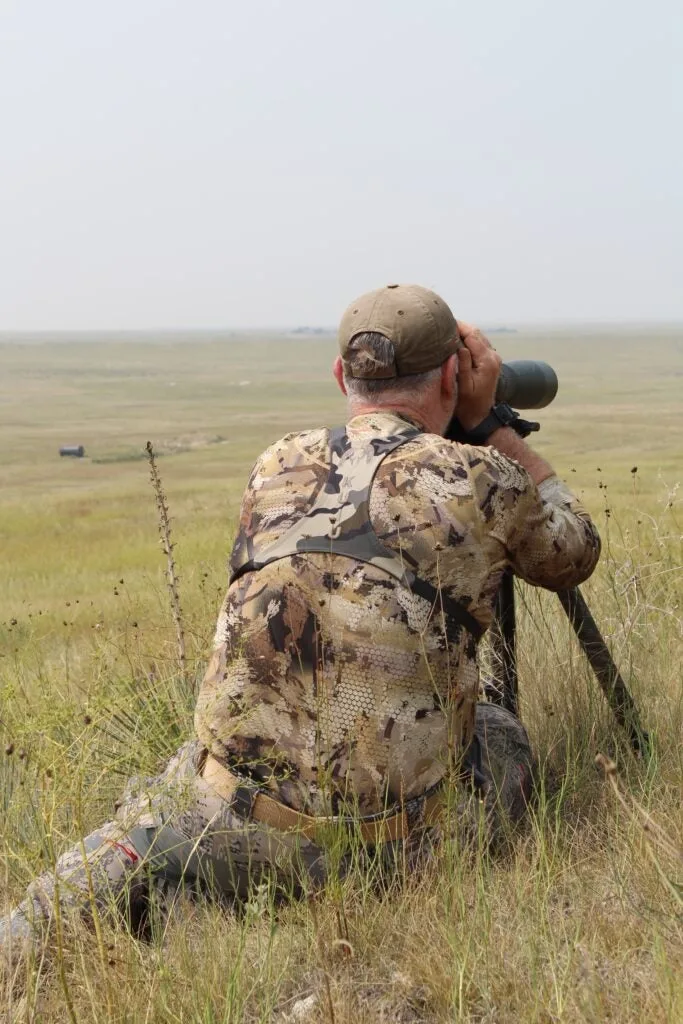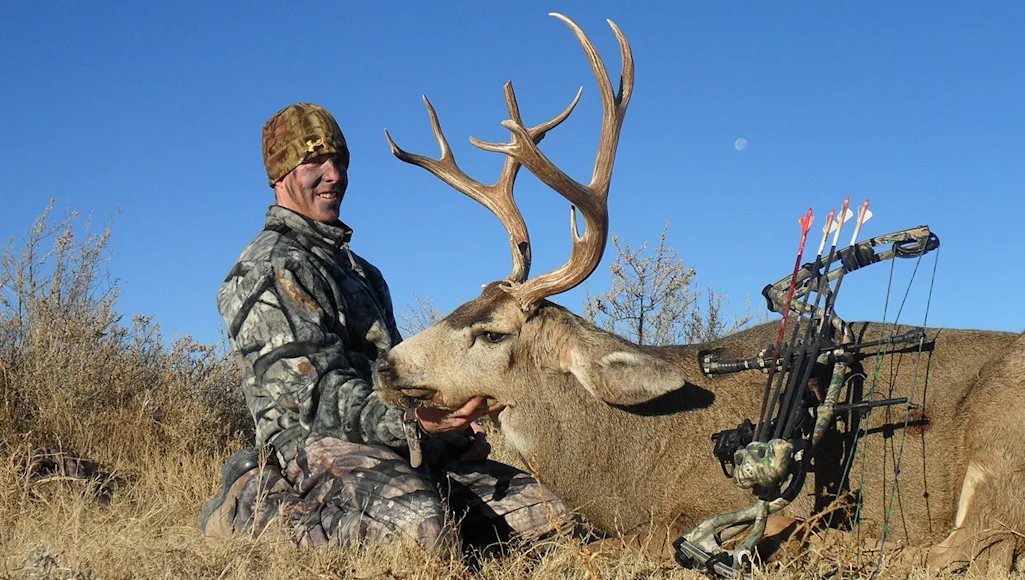If your wallet holds a western mule deer tag, you’re in for some great hunting this month. November is one of my favorite time frames to hunt the muleys with a rifle or archery tackle. Sweetening the pot is that it doesn’t matter if your tag is for the western mountains, cedar-sprinkled foothills, ag-lined river bottoms, or rolling prairie, the month of November is a win, as long as you have a good idea of where to find bucks in these different areas and how to hunt them effectively. So let’s break it down.
Mountain Muley Bucks

The rut is on in mid-November, so you can expect to find great muley bucks at whatever elevation the does are at. Cavan Images / Getty
November in the western mountains can be mild or miserable in terms of the weather. The good news: You’re going to find rutting bucks either way. If snow hits the high county, the does will move to lower elevations. This makes your job much easier, as dark hides are easy to spot against a blanket of white dotted with silver-tipped sage brush. Let your optics do the work. Mature bucks will start gathering harems by the second week in November. Large doe groups are easy to spot, and when you find the does, a good buck will be close by. During November’s first week, savvy old brutes may not have a harem, but will start spending more time on their feet.
If the weather doesn’t hit the mountains in your hunt region, don’t panic. The deer might not be quite as low as they would be if the weather were nasty, but they’ll be stacked in aspen and pine thickets that butt up to lowland meadows. If those meadows have a creek or two snaking through them, all the better. The big key to mountain mule deer hunting in November—gun or bow—is to spend time behind quality glass. Bucks will be on the move, and they will be visible. I like to spend several days scouting before my hunt, dropping pins on my Hunt Stand app and then glassing from each locale for hours on end is how you will find a shooter buck.
Foothill and Canyon Country Mule Deer

The foothill/canyon country of the West is vast, giving mule deer lots and lots of places to hide. Your job is to find good-looking habitat, locate water and food sources, and post up on a high point with good optics. Jace Bauserman
Much of the West is sprinkled with cedar-dotted hills and craggy canyons. Mule deer love this country. The problem: It’s big, vast, and many of the cedar pockets are ultra-thick. Some say the same about the mountains, but mountain muleys are much easier to locate than foothill/canyon country bucks. The reason is taht foothills and canyons are found in pockets along thousands of miles of open plains-type landscape. Deer often aren’t concentrated like they are in mountain locales. Pick the wrong patch of cedars or a canyon that doesn’t hold puddles of water, and you may not see a single deer on your hunt.
The key to killing in these landscapes during November is to stay mobile. Use digital and hands-on scouting to locate areas with good cover, at least one water source, and plenty of food. If you find a gnarly canyon that gives way to thick cedar pockets, jump on your digital scouting app and look for possible water sources. Out West, these sources may be ponds, stock tanks, or small guzzlers. If the area seems dry, it probably is, so move to a more promising area. Once you find one, gain a vantage point on a hill or plateau and see what moves about during an evening. Pay close attention to canyon cuts lined with buck brush.
Ag Land and River Bottom Bucks

The author’s wife took this muley buck in early November last year by still-hunting a cottonwood creek bottom lined with rubs. Jace Bauserman
Early in the month, grain crops can throw you a curveball. Mule deer love corn and maze fields, and they aren’t afraid to reside in them until a John Deere topples the stalks. If you show up for your hunt and grain crops are still in, don’t fret. The key will be finding open pastures, grassland, CRP, and the like that butt up close to these fields. These areas are without question my favorite when chasing November mule deer and the crops have yet to come out. Bucks will start feeling the urge to sniff around. This will force them out of standing crops and into the more open ground during the early-morning and evening hours. Don’t be afraid to drive perimeter roads and glass from the vehicle.
If the crops are out, you’re in the chips. If you have permission to hunt ag fields, this is a no-brainer. Does will move from cover to ag fields during the mornings and evenings, and bucks—both dominate and satellite—will be in tow. If you can’t hunt the ag fields directly, concentrate on CRP fields with deep swells and pastures lined with dry creeks and spotty marshes. Old homesteads littered with weeds and tumble-weed-lined fence rows that seem to swallow old corrals are great places to find a buck or three.
One spot ag-country muley hunters often overlook are river and creek bottoms. Yes, this is traditional whitetail dirt, but a waterway is a waterway, and any river, creek, ditch, or stream will funnel animal movement. I’ve taken some of my best archery mule deer by putting the wind in my face and slipping along a cottonwood-lined creek bottom. I’ve also had great success by sitting off of a waterway with a good spotter, observing mule deer movement, and then hanging a tree stand and playing the sit-and-wait game.
Plains Mule Deer

The western grasslands can seem devoid of game at first glance. However, animals know how to use the subtlest cover or terrain break. Jace Bauserman
The West is home to millions of acres of National Grassland and BLM ground that doesn’t look like it could hide a flea. However, if you start poking around in these areas, you’ll find them to be game-rich. One evening, many moons ago, while hunting the Buffalo Gap National Grasslands in South Dakota, I watched 37 mule deer, nine whitetails, four pronghorn, and six coyotes during an evening glassing session. It seemed every eroded cut, dry creek, or cactus patch had animals living in them. This is a great lesson. Just because the landscape looks like it won’t hold game, doesn’t mean it’s a ghost town. Take a good look at the area via aerial imagery. Be sure to pin any terrain or cover like a patches of heavy sage, cactus, a dry creek, a willow-lined pond, an eroded bank in a hillside, and the list goes on. Once suitable terrain is located, look for water. Food, as the grasslands go, is never much of an issue. The key is finding good cover close to water. Do this, and you’ll find mule deer.


